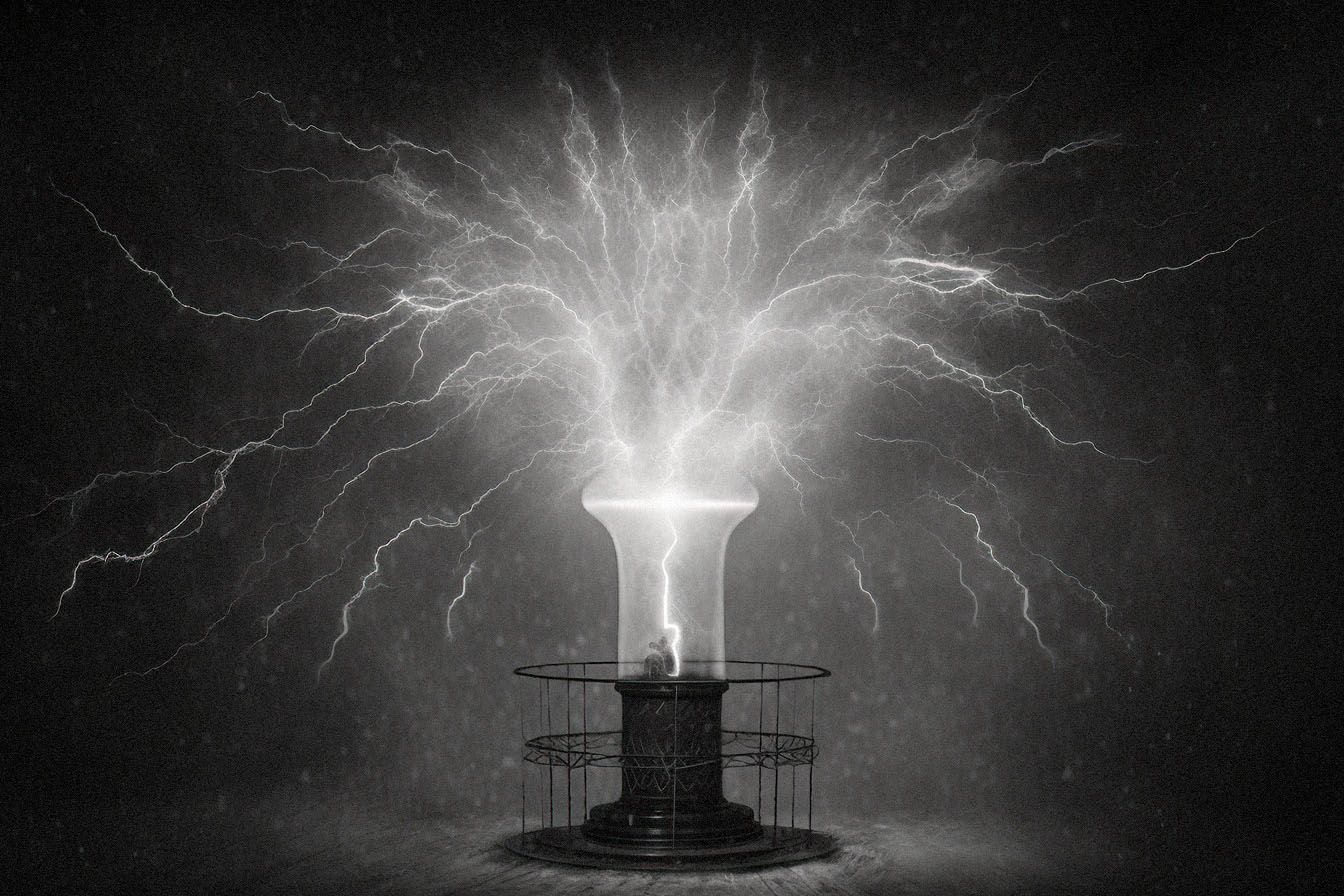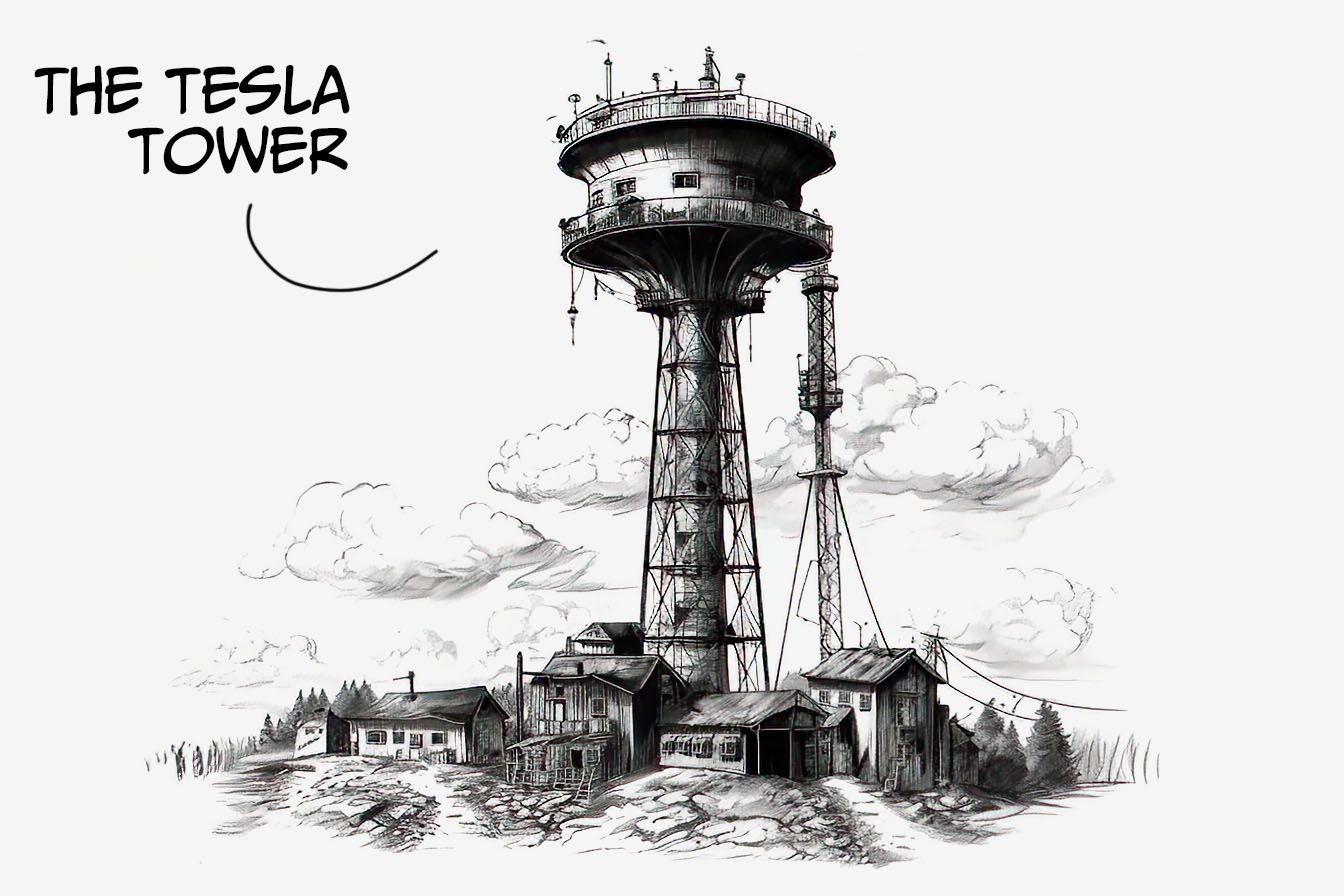Nikola Tesla Today: Modern Innovations and the Wireless World Vision


Okay, picture this: You're strolling through a city that looks like it's straight out of a sci-fi movie, and your phone is magically charging in your pocket—no wires, no power banks, just pure, invisible energy. Sounds awesome, right? Well, this electrifying dream was first imagined by the mad genius Nikola Tesla over a century ago. Mind-blowing, huh?
Now let's pretend Tesla rose from the grave and witnessed the magic of IoT and battery-free microcontrollers powering our modern world. I bet he'd be ecstatic, or maybe even a little smug, knowing that his dream of a wireless world is finally coming to life. And frankly, he has every right to be. His pioneering ideas have laid the foundation for some of the most cutting-edge innovations shaping our lives today.
Prepare for a captivating voyage because we're about to dive into the fascinating world of IoT technologies and battery-free microcontrollers, drawing parallels between Tesla's vision and the current trajectory of these modern marvels. Get ready for an electrifying journey through time and technology as we explore what it would be like if Tesla were alive today to witness the fruits of his genius.
The Early Days of Wireless Communication: Did Tesla Predict the Future?
To kick things off, let's hop into our time machine (bear with me) and zip back to the late 19th and early 20th centuries when Tesla was busy laying the groundwork for our modern wireless world. Back then, the concept of wireless communication was still in its infancy, and Tesla's mind was teeming with revolutionary ideas that seemed almost fantastical at the time.

First up, we have the Tesla coil, an invention that looked like it was ripped straight out of a steampunk novel. This high-voltage, resonant transformer allowed Tesla to experiment with wireless energy transmission, igniting his imagination and sparking some of his boldest ideas. The Tesla coil was not only a testament to his ingenuity but also a precursor to the wireless technologies we know and love today.
Now, while Tesla was busy conjuring up visions of a wireless future, the world was just beginning to dip its toes into long-distance communication. The telegraph and telephone were the talks of the town, but they still relied on cumbersome wires and physical connections. Enter Guglielmo Marconi, the man often credited with inventing the radio. But guess whose work laid the foundation for Marconi's invention? That's right—our dear friend Tesla. His groundbreaking research on wireless energy transmission set the stage for the development of radio and, ultimately, the wireless world we now inhabit.
So, with this brief glimpse into the past, we can see how Tesla's innovative spirit and daring ideas were catalysts for the wireless communication revolution. And now, as we venture back to the present, we'll see how his vision continues to shape our world through the Internet of Things and beyond.
The Internet of Things (IoT) and the Wireless World: Tesla Would Be So Proud
In today's world, connectivity is at an all-time high, and Tesla's dreams are becoming a reality with the advent of the Internet of Things (IoT). But what is the IoT, and how does it relate to Tesla's vision of a wireless world?
Imagine a giant web of interconnected devices and objects, all chatting with each other, sharing data, and making our lives easier, more efficient, and more enjoyable. That's the IoT in a nutshell. From smart homes that cater to our every whim to wearable devices that monitor our health and fitness, the IoT is steadily integrating into the fabric of our existence. Even transportation systems and city infrastructures are joining the movement, transforming the way we move, live, and interact with our surroundings.
Several IoT technologies inspired by Tesla's vision include:
- Wireless Charging: Technologies like Qi wireless charging for smartphones and other devices are becoming increasingly common. They use the principle of electromagnetic induction, which was explored by Tesla in his work on wireless energy transfer. Wireless charging pads for electric vehicles are also being developed, allowing cars to recharge without physically plugging in.
- WiTricity: WiTricity is a company that has developed a technology called "magnetic resonance" for wireless power transfer over longer distances. This technology can be used for charging electric vehicles, consumer electronics, and medical devices. It reflects Tesla's vision of transmitting power wirelessly over long distances.
- Energy Harvesting: Researchers are developing energy-harvesting technologies that capture energy from ambient sources like light, heat, and vibrations. This aligns with Tesla's vision of drawing power from the environment, enabling battery-free operation for IoT devices and sensors.
- Wireless Power Transmission for Space-based Solar Power: Inspired by Tesla's ideas, some researchers are exploring wireless power transmission for space-based solar power systems. These systems would collect solar energy in space and transmit it wirelessly to Earth, potentially revolutionizing energy generation and distribution.
- Ossia's Cota Technology: Ossia is a company that has developed a technology called Cota, which uses radio frequency (RF) signals to transmit power wirelessly over short distances. This technology can be used to power IoT devices, wearables, and other electronics without the need for cables or batteries.
Tesla would likely be thrilled to see these modern technologies bringing his dream of a wireless world closer to reality. As we continue to innovate and push the boundaries of what's possible, the IoT is opening doors to new applications and opportunities that even Tesla could never have dreamed of. With each new breakthrough, we're one step closer to realizing his grand vision of a wireless world.
Battery-Free Microcontrollers: The Unsung Heroes of the IoT Realm
In our quest to bring Tesla's wireless world to life, we've encountered a major roadblock: energy consumption. As we add more and more IoT devices to our lives, the demand for energy-efficient solutions becomes increasingly crucial. It's time to turn our attention to the unsung heroes of the IoT realm: battery-free microcontrollers.
These tiny yet powerful devices are the brains behind most of our smart gadgets, making them tick and ensuring they perform their tasks efficiently. However, traditional microcontrollers rely on batteries or wired power sources, which clashes with Tesla's vision of a wireless world. So, what's the solution? Enter battery-free microcontrollers, the sustainable and wire-free alternative that's about to change the game.
By harnessing energy from ambient sources like light, heat, movement, or radio waves, battery-free microcontrollers can power IoT devices without the need for clunky batteries or tangled cords. This revolutionary approach not only aligns perfectly with Tesla's dream of wireless energy transfer but also paves the way for a more sustainable and environmentally friendly future.
Just picture the possibilities: smartphones that never need charging, wearables that draw power from your body heat, or even entire cities that run on wireless energy. These innovations would undoubtedly leave Tesla both astonished and proud as his once-futuristic vision becomes an achievable reality.
As we continue to develop and refine battery-free microcontroller technology, we're inching closer to a future where Tesla's wireless world is no longer just a dream but an integral part of our everyday lives.
Tesla's Unfinished Masterpiece: The Wardenclyffe Tower

As we delve deeper into the world of wireless technology and IoT, there's one ambitious project from Tesla's past that we simply can't ignore: the Wardenclyffe Tower. Conceived as a means to transmit both wireless messages and electrical power across the globe, the Wardenclyffe Tower was Tesla's unfinished masterpiece.This colossal tower, designed to harness the Earth's natural electrical charge and transmit power wirelessly, was Tesla's most audacious project. Sadly, due to financial difficulties and skepticism from investors, the project was never completed, and the tower was ultimately demolished in 1917.
However, the spirit of the Wardenclyffe Tower lives on in our modern-day innovations. As we strive to develop wireless power transmission technologies and advance the Internet of Things, we're gradually realizing Tesla's vision of a connected, energy-efficient world. We may never see a completed Wardenclyffe Tower in our lifetimes, but the essence of its purpose—wireless power and communication—is very much alive today.
In Conclusion: Channeling Tesla's Spirit in Our Wireless World, Responsibly
As we embark on this thrilling journey through the world of wireless technology, IoT, and battery-free microcontrollers, it's hard not to marvel at the incredible foresight and ingenuity of Nikola Tesla. His pioneering ideas continue to inspire and shape the course of technological development, even over a century after his death.
However, while Tesla's vision of a wireless world is undoubtedly inspiring, it's important to recognize the potential challenges and pitfalls associated with increased connectivity and reliance on technology. As we continue to innovate and embrace a wireless future, we must also be mindful of potential issues such as privacy concerns, data security, and the environmental impact of our expanding digital footprint.
The key to navigating these challenges is to strike a balance between technological advancement and responsible innovation. By learning from Tesla's relentless pursuit of progress and combining it with a thoughtful, ethical approach to technological development, we can build a wireless world that not only realizes Tesla's dream but also addresses the complex issues that come with increased connectivity.
So, what if Nikola Tesla were alive today? There's no doubt he would be both amazed and proud to see his vision of a wireless world materializing before our very eyes. As we continue to innovate and push the boundaries of what's possible, we're not only honoring Tesla's legacy but also building a brighter, more connected, and responsible future for generations to come.
As we channel Tesla's spirit and embrace the wireless world, let's keep dreaming big, challenging the status quo, and daring to imagine a world where anything is possible, all while considering the ethical and responsible development of technology.













